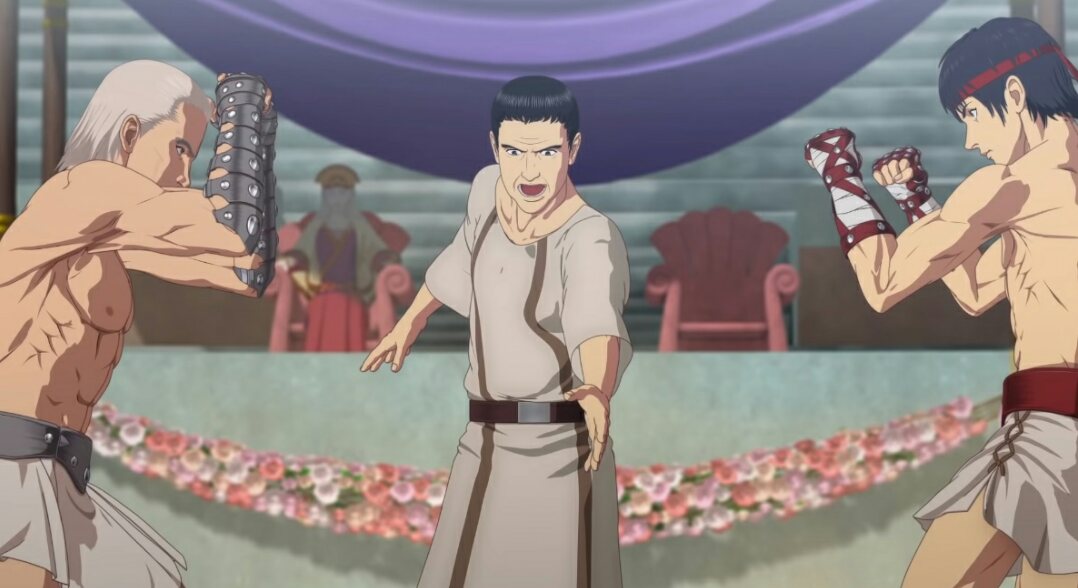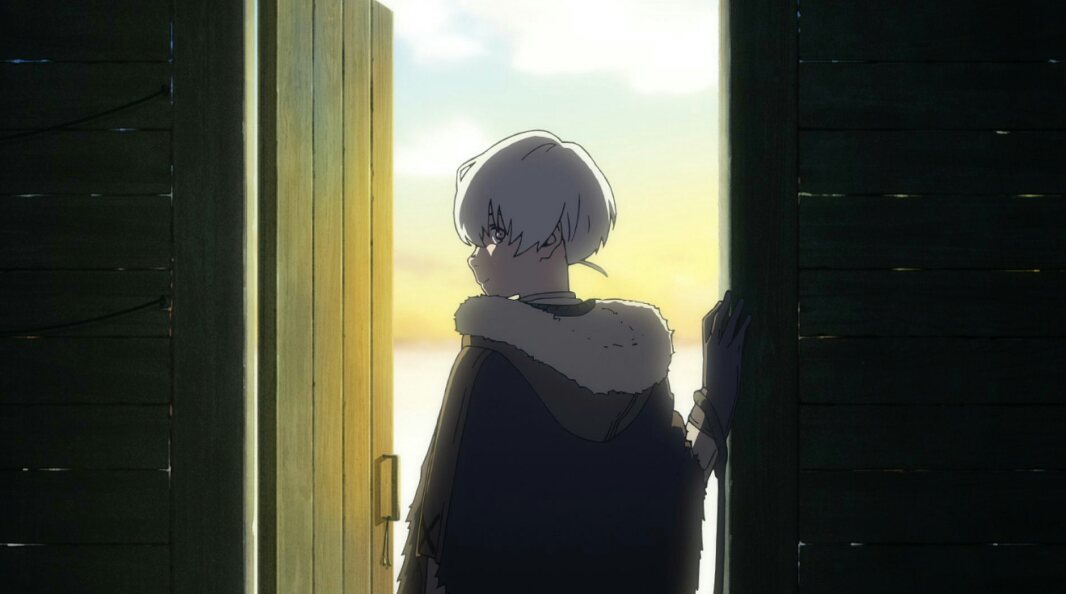SEASONAL PRATTLE
Fumetsu no Anata e finally gets started and the wait was well worth it – already beginning to glisten with the particular blend of sensitive properties that make Ooima’s writing internally click and succeed. Episode one excels at producing effective characterization with the most minimal amount of wasted scripting as possible, which not only makes it feel wholly fulfilling from start to finish, but allows its slow shifting drama a large amount of space to essentially take over and remain in a position of power to the very end. Structurally, Fumetsu is safe yet sleek; Murata’s direction never really takes any risks, but he doesn’t have to – the way he portrays bodies in space, the visual language of the cold world that he hosts, and how he frames the general humanity of his tenants are all a treat to witness. Fumetsu no Anata e has a gradual somber gravity, and you can really feel it. Great job.
Vivy: Fluorite Eye’s Song (4)
“Devised particularly to feature exactly the kind of dynamic tracking shots and shifting directorial tics that Ezaki likes”
What Wit Studio is doing with Vivy: Fluorite Eye’s Song has been a pleasure to watch unfold, and its fourth episode only cements that feeling in a big way. This week is easily Fluorite Eye’s best performance – gifting a compound of design and text that is great at being aesthetically magnetic and emotionally taut. The action found here seemed devised particularly to feature exactly the kind of dynamic tracking shots and shifting directorial tics that Ezaki likes to have in his more propulsive works, resulting in clear and very energetic fights. Outside of the action highlights, many beats in four were just outright beautiful in ideation and performance, like the portion devoted to Estella and Elizabeth coming back together that was a rather healthy marriage of written payoff and production prowess. Vivy: Fluorite Eye’s Song doesn’t really have any glaring weakness – it’s told well, equipped with a more than serviceable lead, inherently curious, and often pretty in the concepts it wants to convey.
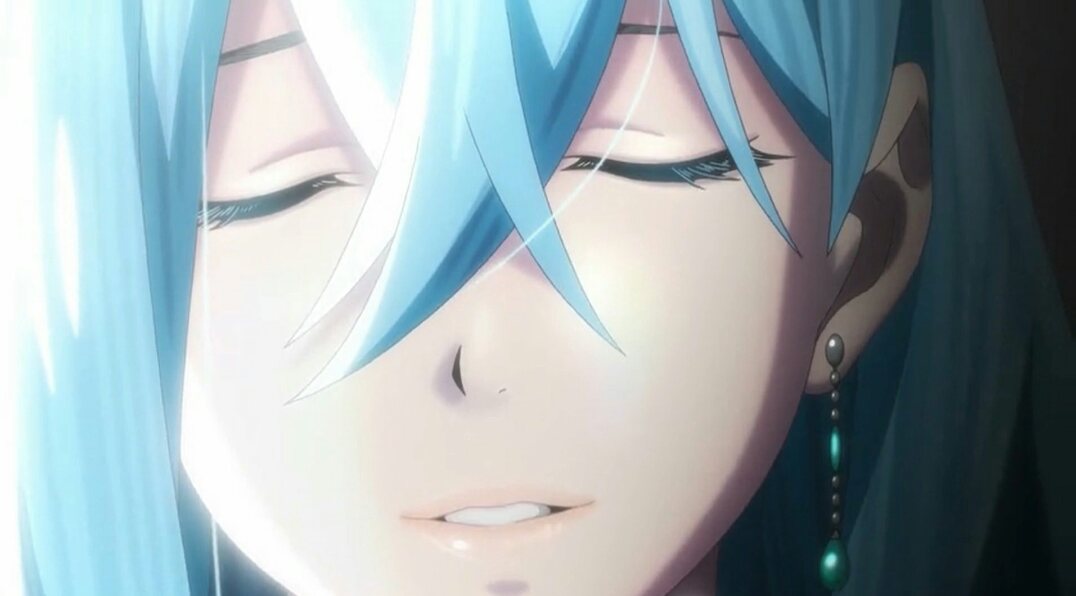
Shadows House (2)
“A good concoction of cute and dark tones that are formulated into a stable serum”
Currently, Shadows House just feels like a well-oiled machine given how it meets the wants of its underlying material with positive structural choices. This week is blessed with a good concoction of cute and dark tones that are formulated into a stable serum – acting as an overall intriguing boost from a narrative perspective while also being effective individually when carrying particular beats – like any of Mia’s scenes. Build wise, two offers a robust twenty minutes, matching passively informative writing about the doll’s situation with a versatile level of visual craft that’s never out of position to capture the intended mood. Nicely done.
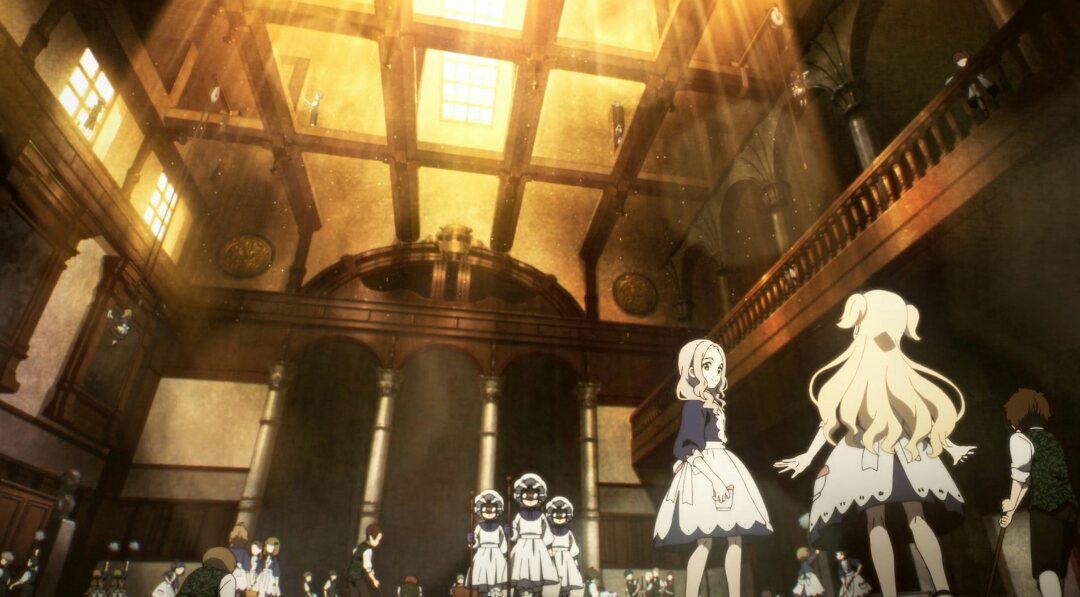
86 (2)
“Where 86 hits a bit of a rocky patch is when it comes to its exposition and jargon”
Second shot for 86 and it’s firm for the most part, thankfully settling down by spending some key time elaborating on the broader dynamics of its world, but still finding room to allow Shin’s unit to shine on the battlefield. The exterior craft here is thoughtful, plump with ostentatious comps and pleasing motion all around its action. And Sawano does a commendable job in assisting the material that he composes over. However, where 86 hits a bit of a rocky patch is when it comes to its exposition and jargon – both of which can be a bit too thick at times and not all that digestible as Ishii does little in ways of presentation to help it go down or reinforce it. With that said, this show’s fundamentals are still good enough where I’m not too concerned, and this latest chunk of material has a natural amount of intrigue where it’s not difficult to look forward to seeing where it goes.
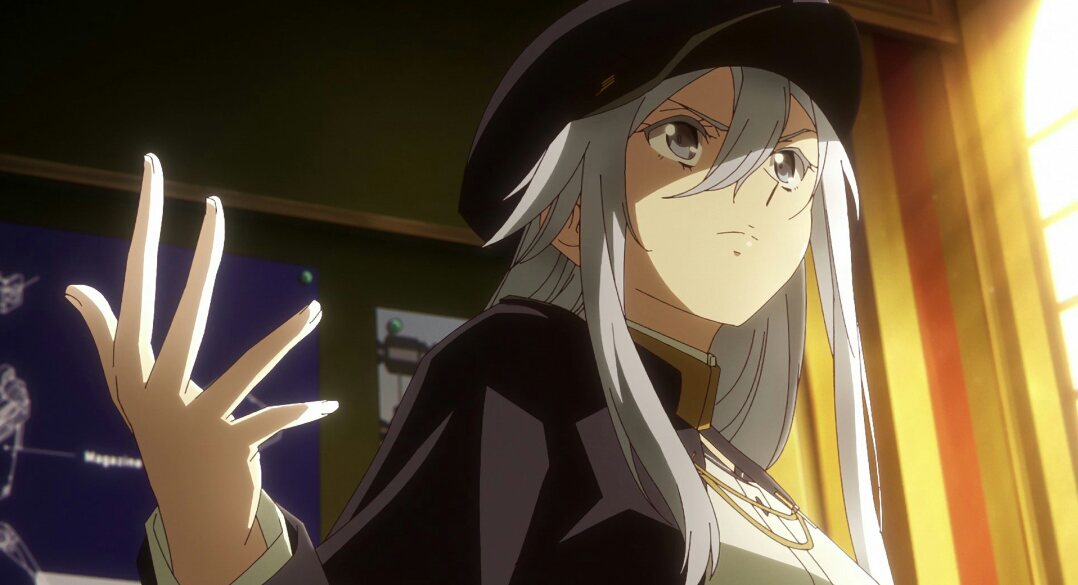
Super Cub (2)
“Already showing brief flashes of chemistry”
Maintaining its quality, Super Cub offers a satisfying cup of comfort in the form of its easy-going storytelling. Koguma’s rapport with Reiko is a bit too innocuous in two, but their involvement with each other is already showing brief flashes of chemistry, and the show’s control of timing and tone makes their school sequences more relaxing than expected. It would be nice if Super Cub could do more in the overarching narrative than just show the bike off and have occasional brief rides, but what it’s currently accomplishing is fine enough for what it wants to be.
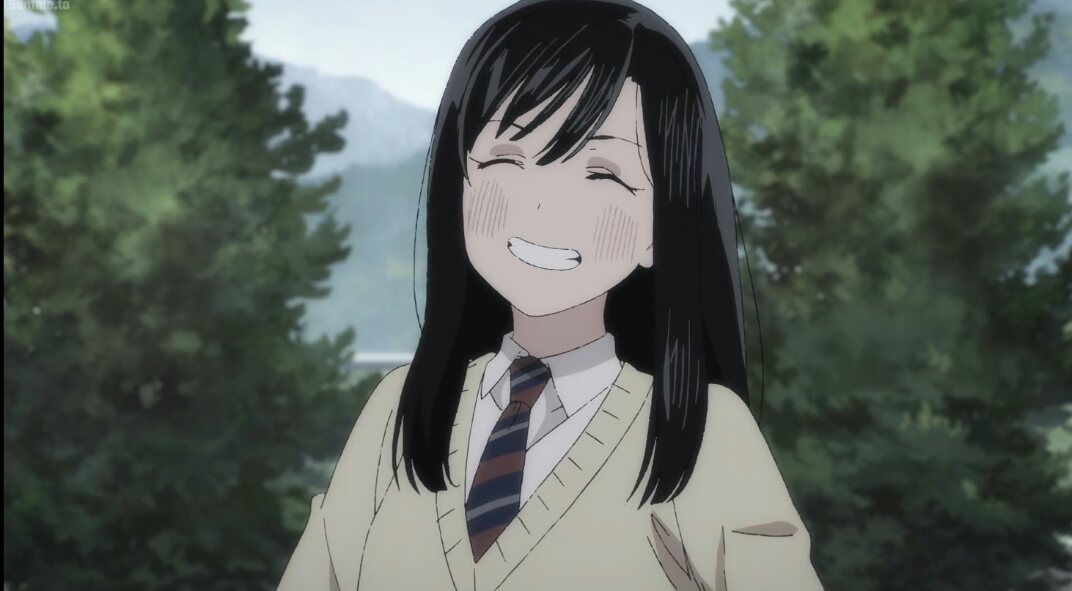
Odd Taxi (2)
“Consistently insightful for the particular character we’re observing”
A large part of why Odd Taxi works so well is simply due to how fluid it is in methodically stitching together all its individual character threads, forming a natural level of intrigue in their cohesion to launch its core mystery off of. However, the individual threads are showing to be pretty capable of excelling in their own right after this second episode. From Ichimura’s fleeting self-esteem to the bigger implications of Shirakawa’s sudden affection – Odd Taxi remains consistently insightful for the particular character we’re observing, and that’s not only rewarding in itself but fun to follow. Combined that with its storytelling sensibilities and you have a stealthy good show so far.
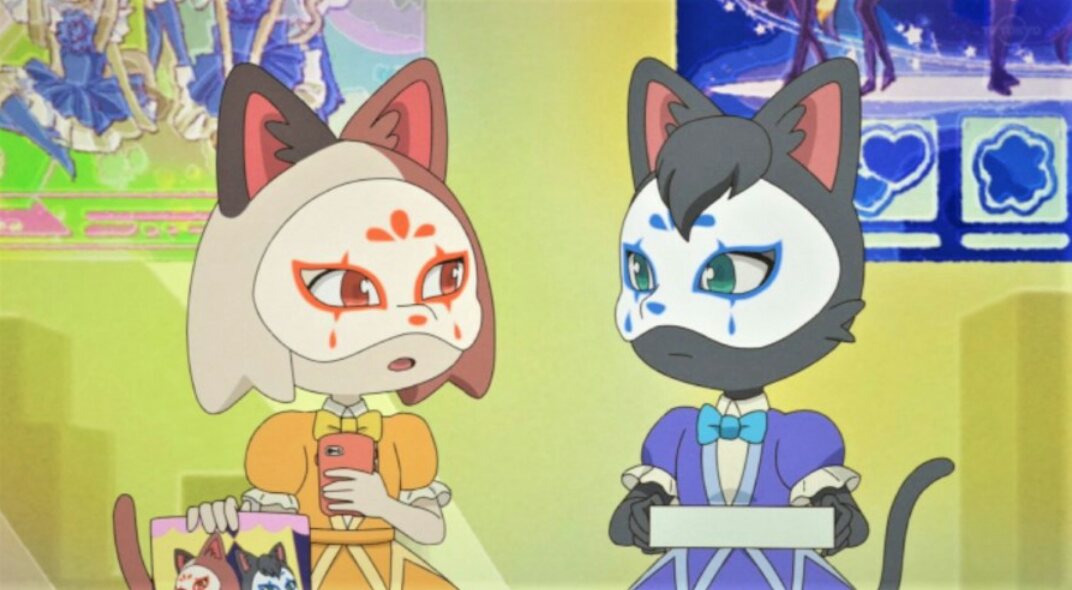
Bishounen Tanteidan (2)
“Various decorations that keeps its presentation innately entertaining”
Nice level of touch that’s being put on Bishounen Tanteidan this week. I’ve mentioned on a number of occasions in the past how talented staff can utterly take over a work in key situations, not only elevating rigid patches in the material but outright giving them new life – and that’s essentially what’s occurring here in this series’ second episode. The deduction and conclusion of Mayumi’s “star” that eats up the bulk of this run isn’t exactly that riveting, and Nagahiro is a little long-winded in unpacking it – but its production bails it out with various decorations that keeps its presentation innately entertaining and lends itself gracefully as the episode churns towards a more interesting cliffhanger. Bishounen Tanteidan continues to be one of Spring’s better, yet often overlooked shows
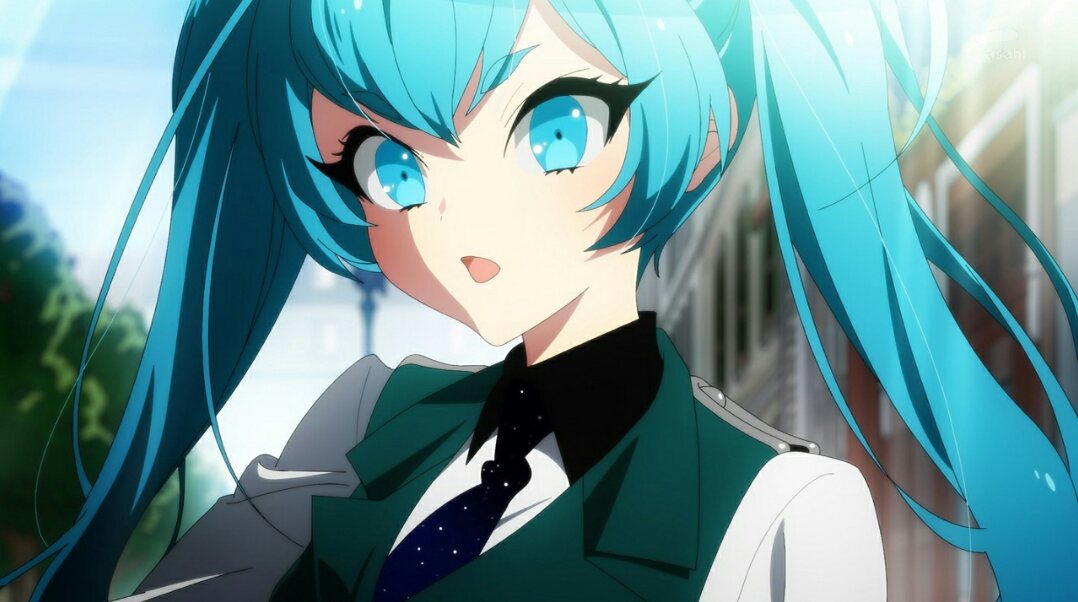
Mashiro no Oto (3)
“Shuri, Setsu, and Yui offer enough in their routines and personal exchanges to carry the episode’s needs”
Still in good shape, Mashiro no Oto sees its third episode come and go with next to no trouble in-between. It’s easy to get on board with three’s material; There’s not much ambiguity with what the series is trying to accomplish in this portion of the narrative but in retrospect, there’s really no need for there to be. Even with its general direction being pretty obvious at times, Shuri, Setsu, and Yui offer enough in their routines and personal exchanges to carry the episode’s needs – safely getting viewers to Kamiki’s introduction and shortly after, the episode’s close. The last scene kind of played up its own drama a bit much, considering how Setsu reacted and stormed out, nevertheless it’s ultimately a little scratch on an otherwise fine overall performance.
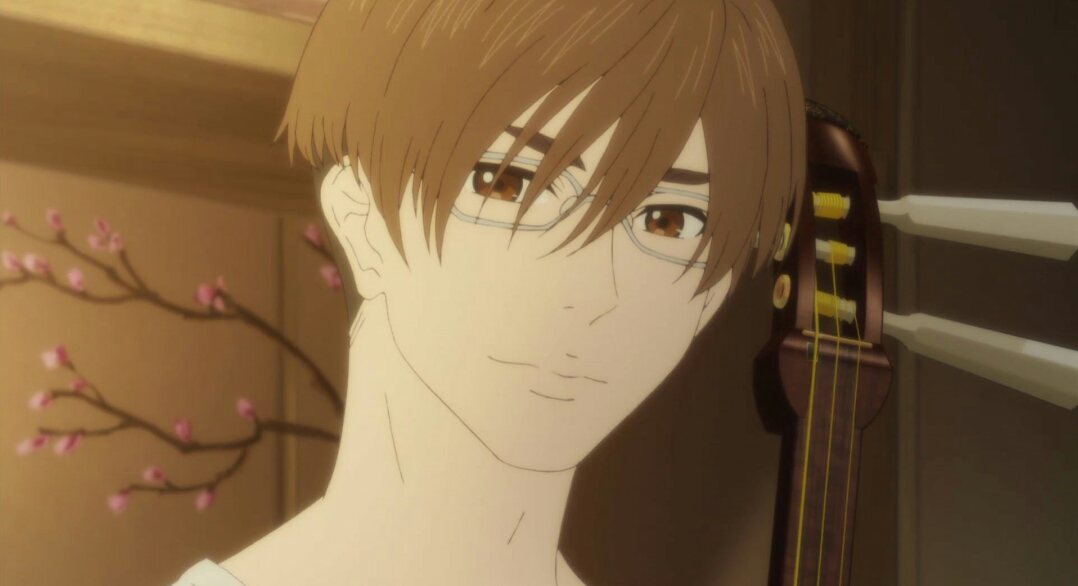
Ijiranaide, Nagatoro-san (2)
“Nagatoro’s taunts and jabs are still fresh enough to be fun and the scenario writing hasn’t worn out its welcome”
Ijiranaide, Nagatoro-san checks in with just about the same quality as seven days ago, showing a little more complexion for Nagatoro’s character in its waning minutes but not really offering much beyond that in terms of new dynamics and flows. So while it still comes across as a step up from its brethren in this niche, Nagatoro-san’s approach is just as particularly susceptible to inertia and will need to do what it can to augment its teasing gimmick and avoid falling in flat water. Right now it’s fine, Nagatoro’s taunts and jabs are still fresh enough to be fun and the scenario writing hasn’t worn out its welcome. That being said, the show can’t just live off a pure version of this forever if it wants to be “good”. Hopefully it has a few nuances here and there where it doesn’t have to.
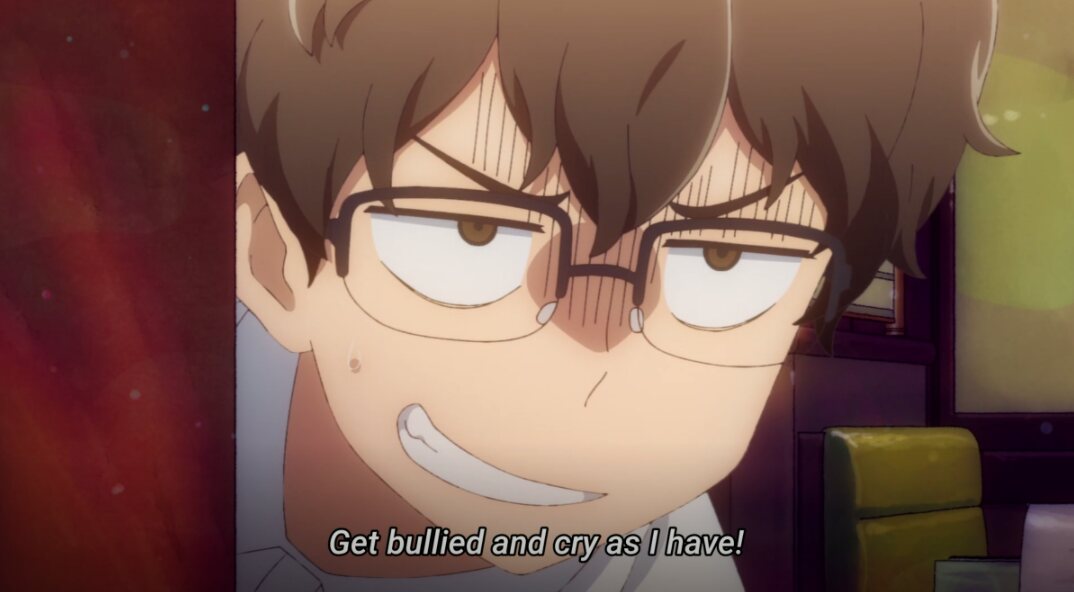
Koikimo (3)
“Almost an immediate upgrade in every department from last week’s addition of Masuda”
And Koikimo’s upward trajectory continues. The show still isn’t patently good in the way it’s constructed or told but it steadily makes small improvements that allow it to slide by the passable mark without too much hassle. Episode three’s addition of Tamaru is almost an immediate upgrade in every department from last week’s addition of Masuda, as he’s not only more narratively impactful on a whole, but positioned as good firewood for drama too. And three has no problem playing off of him. Not every sequence in this one is a Tamaru tangent, but the ones that are come across as fair for the jealousy this week is looking to achieve.
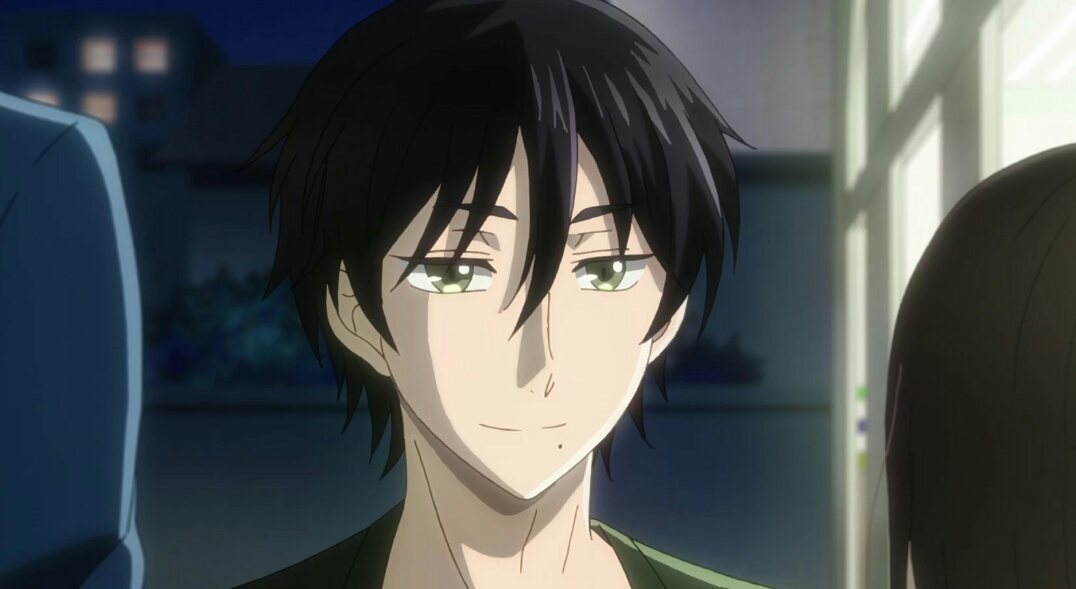
Slime Taoshite 300-nen, Shiranai Uchi ni Level Max ni Nattemashita (2)
“Our two new faces fall into the very airy brand of cute that Slime Taoshite clearly wants to operate with,”
Slime Taoshite 300-nen, Shiranai Uchi ni Level Max ni Nattemashita pushes ahead, quietly coming together as a decent genre piece. Structurally, episode two is lightweight; Even with the additions of Falfa and Shalsha there isn’t much of a change from the platform this series already speaks from – swiftly having our two new faces fall into the very airy brand of cute that Slime Taoshite clearly wants to operate with, and seamlessly positioning them in a manner that complements, rather than complicates, Azusa’s life. The result makes for a warm, family-like affair – one that doesn’t breed too many jokes or interesting developments but accomplishes enough to be a fair watch.

Jouran: The Princess of Snow and Blood (3)
“Some really worrisome storytelling”
Jouran: The Princess of Snow and Blood had a relatively competent third act in relation to how the rest of the series has played out to this point. It helps that episode three so happens to be Jouran’s lightest offering of action, and with that, viewers aren’t exposed to this series’ weaker visual craft and overall ineptitude when it comes to imagining a fight. However, in its place is just some really worrisome storytelling. I’m all for reveals and plot twists in stories, but when your episode is just a chunky clump of them moderately strung together, it’s a big red flag for its future quality. Maybe Jouran: The Princess of Snow and Blood is a fine show when it all shakes out, but its total performance is borderline at best currently which really doesn’t cut it in a good Spring season.
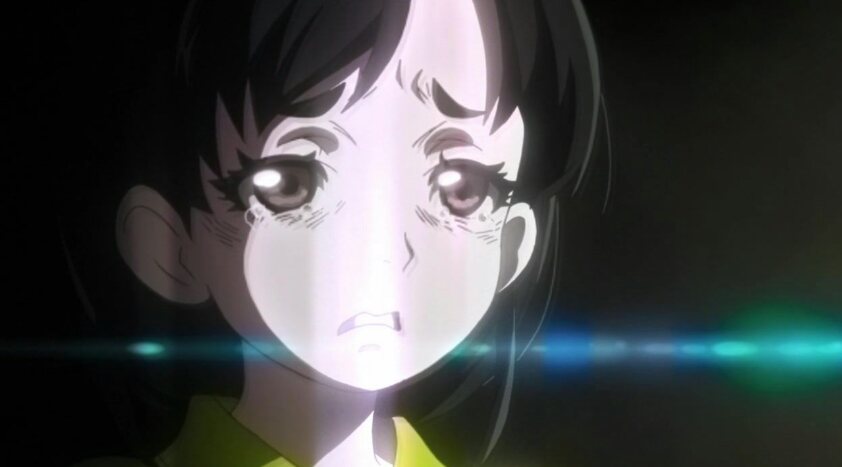
Mars Red (2)
“The welding of genre spaces it wants to deploy to the harder thematics from the plays it incorporates is a tougher trick to pull off than it seems”
I was a little worried Mars Red would veer off into rougher territories that continued to demonstrate its weakness – the welding of genre spaces it wants to deploy to the harder thematics from the plays it incorporates is a tougher trick to pull off than it seems – and unfortunately, my worries are confirmed as it’s just not up to the task in this second showing. Chiefly, Code Zero’s involvement never really elevates the Romeo and Juliet tints that the content rides on and often sort of just ends up muddling it, resulting in a basic portrayal of those ideas amidst mild vampire action that never really captivates. With Spring having a fair amount of good titles, there’s almost definitely a better show that could be watched.
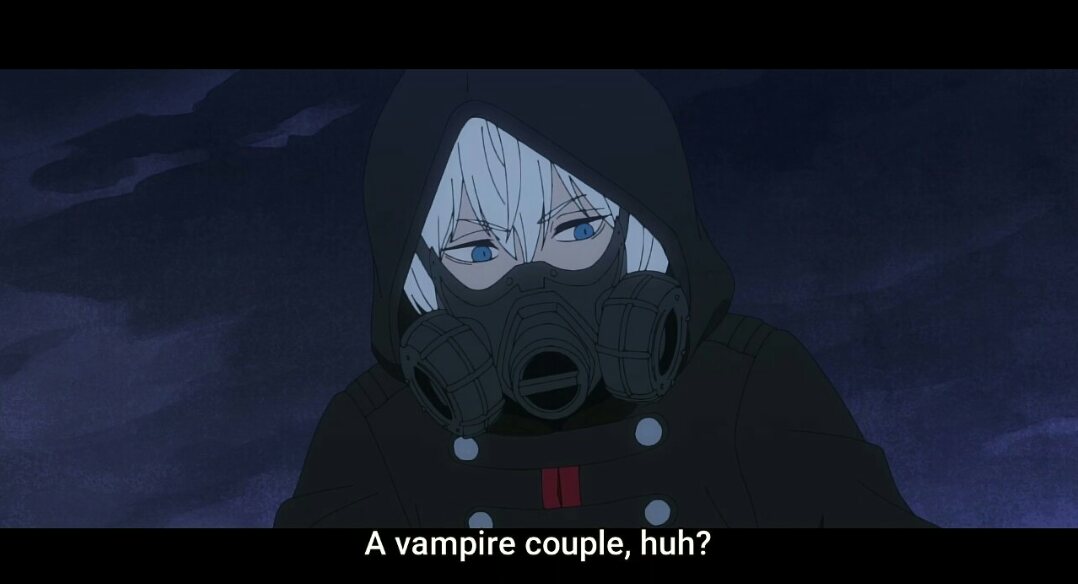
Higehiro (2)
“A necessity to pave the road for more engaging material to come”
Second act for Higehiro and it’s a moderate one. There were certainly inherently adorable moments built into what two had to offer, like Yoshida getting and inevitably gifting Sayu a phone and her related reaction, but those beats felt like decoration around a more fundamentally mundane center. The bulk of two is a canvas to paint the faces in Yoshida’s work-life – establishing light rapport and giving a little more meat to the Gotou relationship. Nothing particularly commendable emerges in that process, and the effort and flow behind it all are more workmanlike than anything – but episodes like this are often a necessity to pave the road for more engaging material to come.
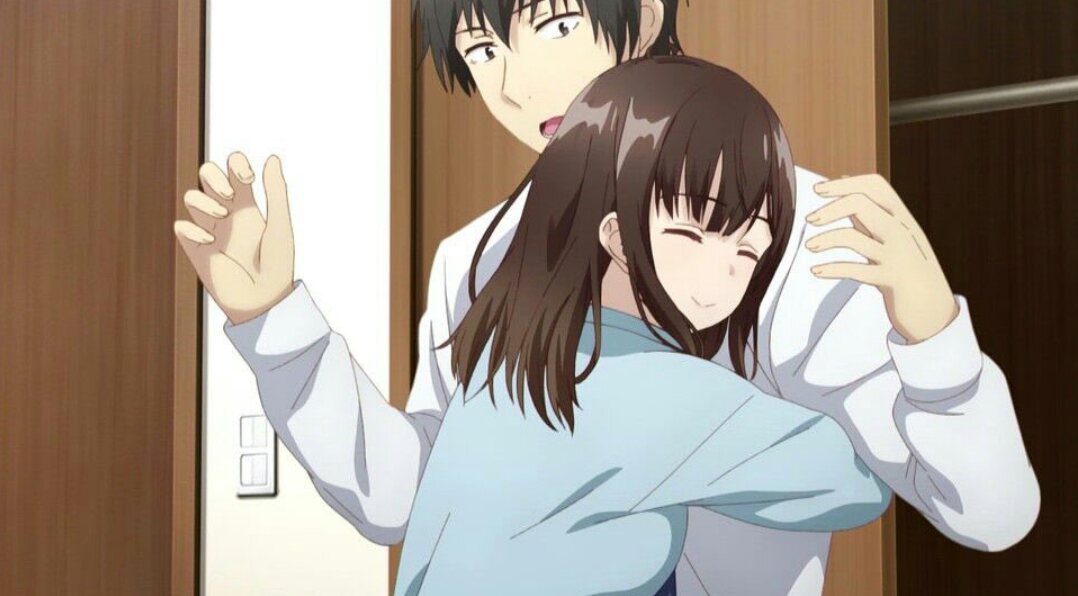
Subarashiki Kono Sekai The Animation (2)
“Its compressed nature hurts, and badly at that”
Subarashiki Kono Sekai The Animation’s latest would be a perfectly reasonable entry into the series if it could convincingly tell its story without feeling like a professional speedrun. There’s actually some passable execution around Shiki’s parts and episode two on a whole is less of a visual abomination than episode one, but its compressed nature hurts, and badly at that. Viewers would be better off just playing the game at this point if this is how it’s going to be.
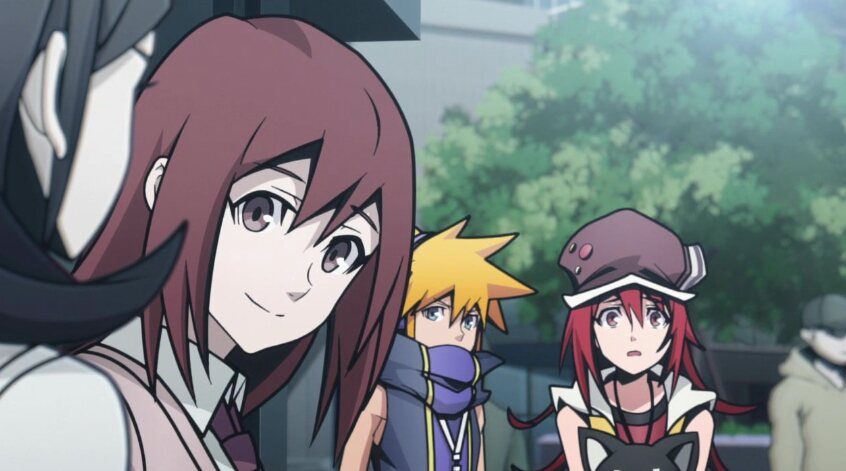
Osananajimi ga Zettai ni Makenai Love Comedy (1)
“Never seems to elevate the vanilla writing this show is trying to put out even in passing”
Osananajimi ga Zettai ni Makenai Love Comedy enters Spring with little impact – despite being a comedy and a romance it really hasn’t shown to be appreciable as either, rather, it’s just a deeply average light novel romcom led by a copy and pasted protagonist who is surrounded by starter pack heroines. Almost every nook and cranny of episode one is highly generic – highlighted with how impressively snug Kachi and Shida instantly fit into the cliche, rusty archetype molds that have long been abused to construct basic characters in these types of shows – and inevitably proving to have a level of overall plotting to match. For a Doga Kobo anime, this premiere is surprisingly restricted in motion, rather limited when it comes to even routine expressions, and the studio never seems to elevate the vanilla writing this show is trying to put out even in passing. Osananajimi ga Zettai ni Makenai Love Comedy raises enough flags that suggest it will be flirting with mediocrity moving forward, but time will tell.
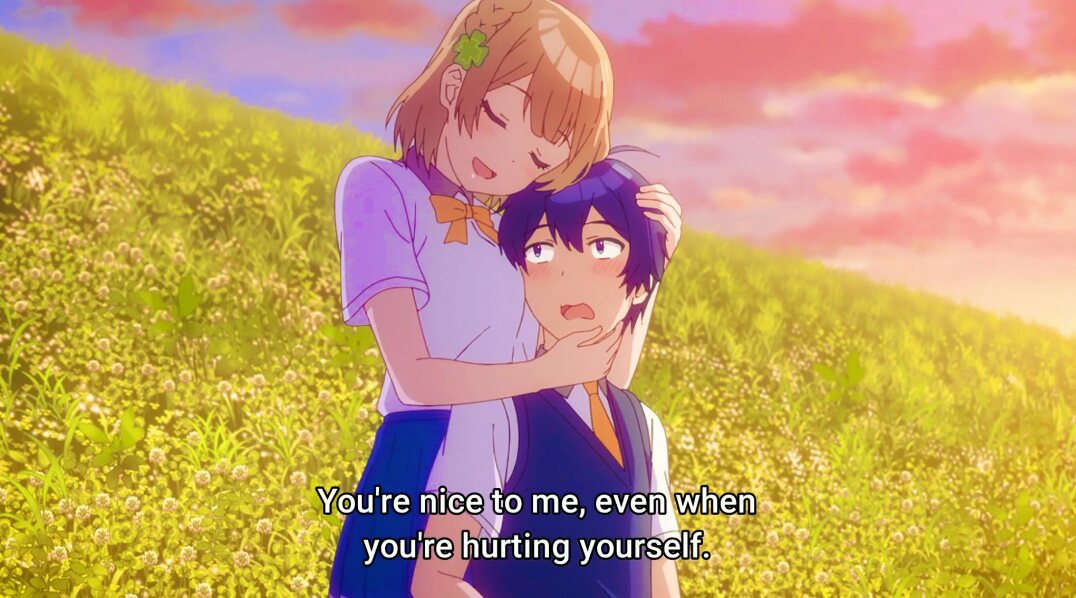
Seijo no Maryoku wa Bannou Desu (2)
“Its medicinal ways continue to be all too gentle, overly safe in choice, often avoiding conflict in method”
It’s the follow-up episode for Seijo no Maryoku wa Bannou Desu and when the dust settles, it’s a performance that leans more towards “okay” than anything else. Pharmacology isn’t exactly the most thrilling subject on the surface and even more so when its exploration has been limited to just the tip of ordinary applications. Compounding on that, a lot of the plot beats found in episode two that are aligned with its medicinal ways continue to be all too gentle, overly safe in choice, often avoiding conflict in method, and when it doesn’t – the outcome is passive. So while Sei’s abilities increase her creations’ potency, Seijo no Maryoku wa Bannou Desu never really voices that in a way that’s interesting, and thus we end up with stuff like whipping up a BHA for some random girl’s acne that works great and nothing more. Perhaps in time Seijo no Maryoku wa Bannou Desu uses its gimmick in a sticker way – exploring toxicity, harder side effects, more unique applications and formulations, could all be ways to go about that – but this week clearly isn’t that time.
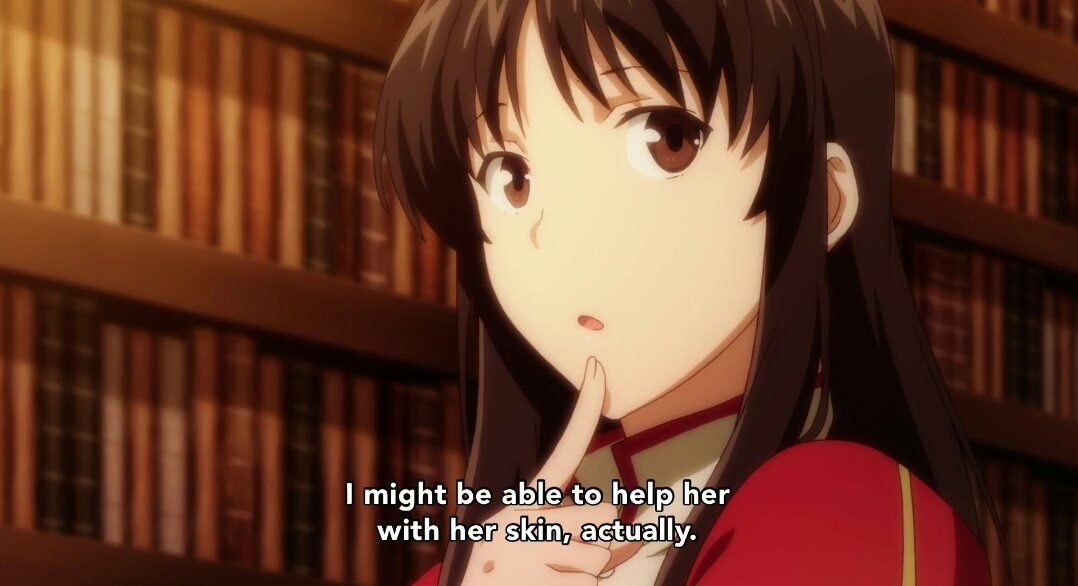
Kyuukyoku Shinka shita Full Dive RPG ga Genjitsu yori mo Kusoge Dattara (2)
“The vast majority of the show still functions in a shoebox and continues to have an affinity with the most expected touchpoints of its genre”
Kyuukyoku Shinka shita Full Dive RPG ga Genjitsu yori mo Kusoge Dattara second episode was a small improvement over the first, partly because it was a bit better at setting up its comedic punches, and partly because we got a little more on KQ’s dynamics in a way that at least makes a better attempt to be intriguing. However, the vast majority of the show still functions in a shoebox and continues to have an affinity with the most expected touchpoints of its genre. Evidently, there’s a low amount of novelty, a high amount of middling execution, and a growing pool of signs to quietly put this one on the shelf.

SSSS.Dynazenon (3)
“It’s as if Trigger is completely tone-deaf to how anyone would organically respond in these situations”
SSSS.Dynazenon rolls on, offering a third episode that’s equally strong at articulating this series’ growing trend of feeble writing as it is at providing underwhelming plotting. The concept of good character acting is entirely lost in this episode, there is none – from the totally unfazed reactions at Gauma’s past to Yomogi’s nonchalant exchanges with Juuga, it’s as if Trigger is completely tone-deaf to how anyone would organically respond in these situations, opting to make their characters just quietly accept and go with whatever they’re served no matter the circumstances or reveal. Stunted and awkward dialogue is abundant, notably found in yet another dose of Minami’s unsolicited personal admissions, and the show has seemingly drifted towards a lazy style of worldbuilding and telling where passive to moderate details in the story are hardly if at all elaborated. An easy swing and a miss.
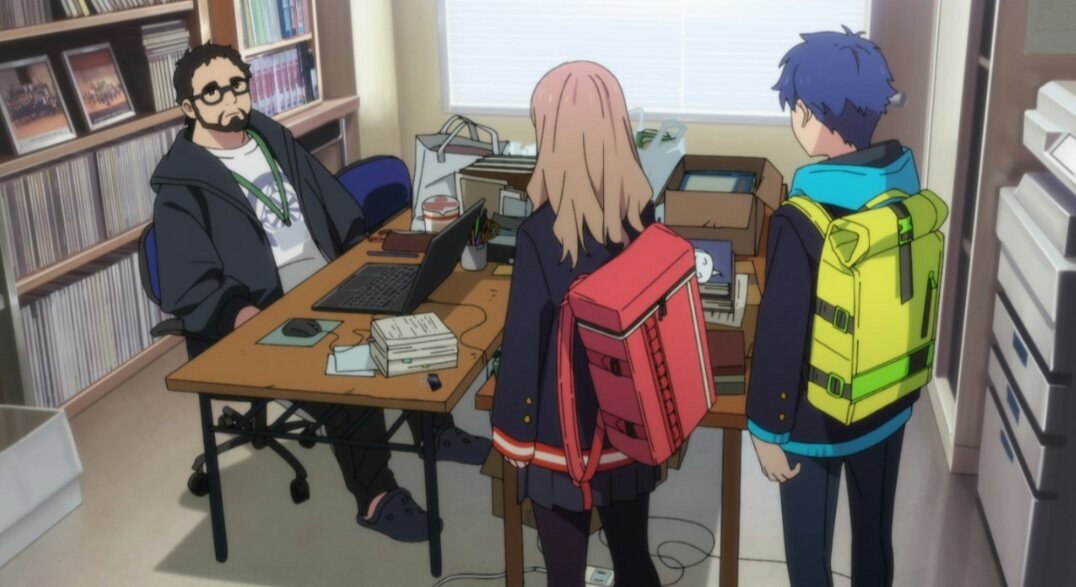
Blue Reflection Ray (2)
“One blisteringly bright reminder that J.C.Staff’s unit on this project struggles to elevate practically anything the script wants to do”
Second time around for Blue Reflection Ray and it’s just largely a confirmation of last week – primarily in that it’s one blisteringly bright reminder that J.C.Staff’s unit on this project struggles to elevate practically anything the script wants to do. So while it helps that episode two thankfully decided to unpack some of the logistics of Hiori and Ruka’s newfound circumstances, in addition to attempting more rigid pieces of characterization for a good chunk of the cast so far – the obvious physical constraints on it all are too heavy for those pros to outweigh. It’s to such an extent at times, even a character just walking down the street can be a painful event.
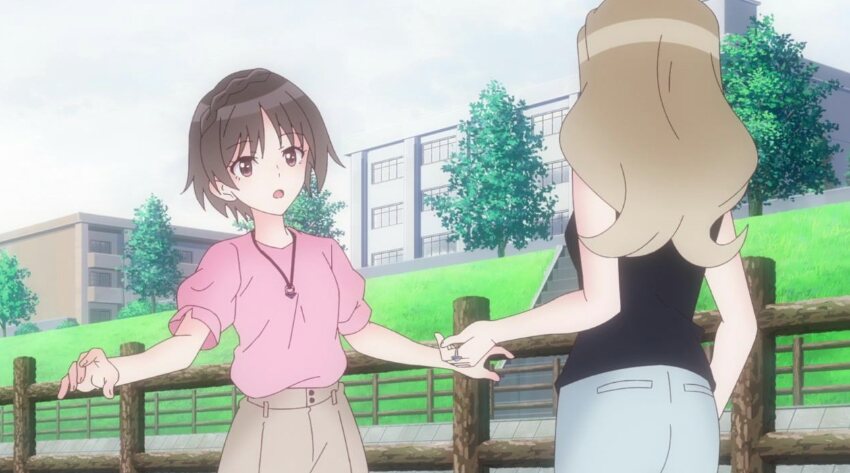
Cestvs: The Roman Fighter (1)
“Cheap emotional tugs and the broadest framework of its world in what ultimately amounts to a failed attempt in reaching competency”
Cestvs: The Roman Fighter premieres, promptly declaring itself a mess in doing so. To be blunt, Kawase doesn’t appear to be comfortable on this project: Episode one is a very brisk depiction of Cestvs’ life that never gets enough of a foothold to make it investable, relying on a couple of cheap emotional tugs and the broadest framework of its world in what ultimately amounts to a failed attempt in reaching competency. Even worse, Kawase’s vision of seemingly anything involving martial arts here ranges from laughable to barely okay – which especially hurts given how much the premise concerns itself with combat. Perhaps with a stronger studio and staff, Cestvs: The Roman Fighter could have been a satisfying time.
